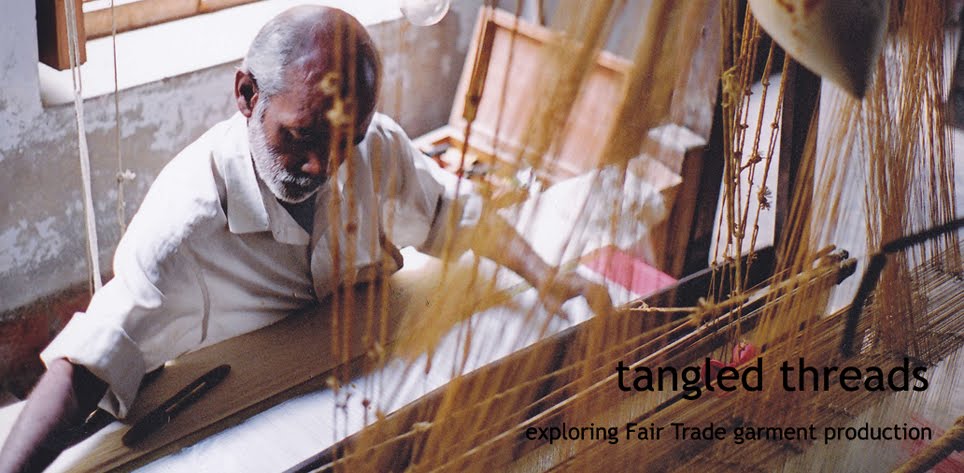.JPG)
.JPG)

23rd August 2010
Kalaro – Continuous flow of art
Today I joined Zoe in going to a pretty surreal place, a hand knitting group that makes jumpers for Norway, using the traditional circle knitting technique of Scandinavia. A strange sight to behold in a tropical country.
We set off at about 9.30 with the manager Priyantha Subasinghe to a fishing village called Munnakkaga a small island off Negambo. Here he employs 28 women who all knit intricate jumpers from complicated home knitting patterns, these items are then used as the display piece for knitting shops in Norway. If these women didn’t knit for Kalaro, it is more than likely they would have no other source of income as this is a poor area, the main income in fishing – a not so stable profession for the men of Munnakkaga.
Previously, Priyantha worked for a company that his grandfather set up back in 1979, training over 4,000 Sri Lankan knitters over the 25 years that it ran. Back in 1979 a Norwegian company put out a contract to South Asian countries to become producers of classic jumpers, the kind you see in amusing 1970’s Scandinavian outdoor living advertisements. A company in China also put in a tender, but the tenacity of Priyantha’s grandfather meant that he won the contract due to his implementation of a cottage industry, connecting poor villages across Sri Lanka in centralized community workshops as opposed to a large factory as suggested by the Chinese company. It was very successful until 2004, when due to the Norwegian company restructuring, the 500 knitters employed were no longer needed. So Priyantha decided to set up on his own, taking 50 of the most skilled knitters to continue to supply a few other companies in Norway.
The structure of work is very flexible. All the women have children so they are able to get them ready for school and they go home at lunch time to prepare food for their children as well. Because of this flexibility they are also able to complete their house work and take time off when their husbands return from sea. This is at the same time as earning above minimum wage. If they lived in the city, they may be able to earn more than this in one of the larger garment factories, but they would be paying for either board or transport, and there is no way that they would have the same kind of flexibility.
These women are amazingly talented, to be able to knit a garment so perfect that the company occasionally gets complaints that it doesn’t look like it is hand knitted, at the same time as never having had the need to wear a wooly jumper in all their life is phenomenal.

No comments:
Post a Comment